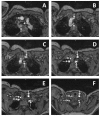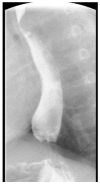Natural History of Asymptomatic and Unrepaired Vascular Rings: Is Watchful Waiting a Viable Option? A New Case and Review of Previously Reported Cases
- PMID: 28009833
- PMCID: PMC5184819
- DOI: 10.3390/children3040044
Natural History of Asymptomatic and Unrepaired Vascular Rings: Is Watchful Waiting a Viable Option? A New Case and Review of Previously Reported Cases
Abstract
Vascular rings are a rare form of congenital heart disease in which abnormal aortic arch anatomy leads to encircling of the esophagus and/or trachea by the aortic vasculature. Symptoms can develop from this and prompt the need for surgery. A natural history study has been done on mildly symptomatic patients but no such study has been done on asymptomatic patients. We present a case report of three children with asymptomatic vascular rings who continue to receive follow-up without intervention and review all published cases of asymptomatic or unrepaired vascular rings. Clinical observation of asymptomatic and mildly symptomatic vascular rings, regardless of aortic arch anatomy, seems to be a safe approach. Children with mild symptoms almost invariably seem to have resolution of their symptoms by four years of age.
Keywords: asymptomatic; double aortic arch; right aortic arch; unrepaired; vascular anomaly; vascular ring.
Conflict of interest statement
The authors declare no conflict of interest. This research received no specific grant from any funding agency, commercial or not-for-profit sectors.
Figures


References
-
- Keane J.F., Lock J.E., Fyler D.C., Nadas A.S. Nadas’ Pediatric Cardiology. 2nd ed. Saunders; Philadelphia, PA, USA: 2006.
-
- Woods R.K., Sharp R.J., Holcomb G.W., 3rd, Snyder C.L., Lofland G.K., Ashcraft K.W., Holder T.M. Vascular anomalies and tracheoesophageal compression: A single institution’s 25-year experience. Ann. Thorac. Surg. 2001;72:434–438; discussion 438–439. doi: 10.1016/S0003-4975(01)02806-5. - DOI - PubMed
Publication types
LinkOut - more resources
Full Text Sources
Other Literature Sources

